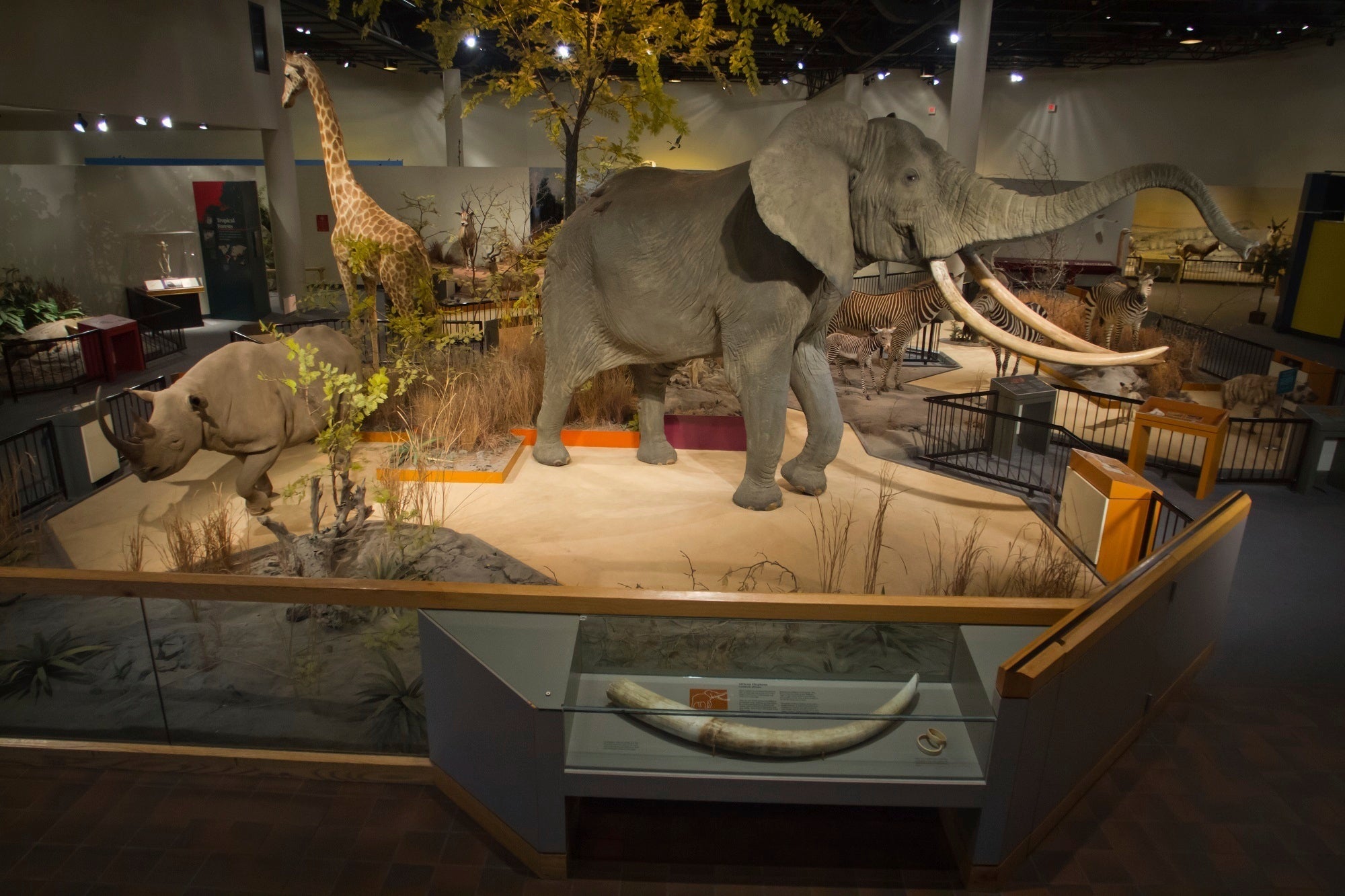Sioux Falls pauses plan to ditch arsenic-contaminated taxidermy display at state's largest zoo
The Sioux Falls mayor announced a “strategic pause” in the city’s plans to ditch an arsenic-contaminated menagerie of more than 150 taxidermy animals that fill a now-closed natural history museum at the state’s largest zoo

The Sioux Falls mayor announced a "strategic pause" Friday in the city's plans to ditch an arsenic-contaminated menagerie of more than 150 taxidermy animals that fill a now-closed natural history museum at the state's largest zoo.
Mayor Paul TenHaken said in a news release that he has created a working group to figure out what to do with each of the mounted animals, including a lion, tiger and polar bear. The move follows intense pushback from the community and museum taxidermy experts, who say the arsenic risk is overblown.
Older taxidermy specimens are frequently displayed, experts say, with museums taking precautions like using special vacuums to clean them or to encase them in glass. But Sioux Falls officials have said that would be costly.
The mayor acknowledged the concerns but said that taxidermy, in its current condition, cannot remain on the campus of the Great Plains Zoo.
“We collaborated with City Council leadership on this strategic pause to bring a clear plan forward that identifies what will happen to each specimen,” he said.
The situation is complicated by a morass of state and federal laws that limit what can be done with the mounts. One issue is that the collection includes 53 endangered species, according to zoo officials, and they are protected even in death under federal law and international laws.
Sioux Falls businessman Henry Brockhouse hunted most of the animals in the collection during a series of international hunting expeditions that started around 80 years ago. They were mounted by some of the foremost taxidermists of the time — Jonas Brothers Taxidermy, no relation to the pop band — and displayed at Brockhouse's West Sioux Hardware store.
Following his death in 1978 and the subsequent closure of the store, his friend, C.J. Delbridge, snapped the collection up for $550,000 and donated it to the city.
The natural history museum that bore Delbridge’s name opened in 1984. Ultimately the original 150-animal Brockhouse collection grew to around 170 animals as other mounts were acquired, including a giant panda that was donated by China. Around 20 of the animals are in storage.
But the display occupies prime real estate near the zoo's entrance, which officials are eyeing as they look for a spot to build a new aquarium and butterfly conservatory. Currently, the taxidermy does not hold a strong draw for visitors, said Great Plains Zoo CEO Becky Dewitz.
“I think at one point in time it probably did," she said in a meeting last week, "but not today.”
With some of them showing signs of wear, the zoo considered moving the ones in the best condition to a smaller space, but the arsenic is complicating that. Test results, returned last month, showed nearly 80% were positive for detectable levels of arsenic, and city officials said they aren't willing to take any chances.
The initial donation agreement, obtained by The Associated Press through a records request, said the collection needed to be kept behind glass or a suitable material to prevent touching. City officials insisted at last week's meeting that the barriers in place at the museum complied, but they also blamed some of the taxidermy damage to visitors ignoring signs and touching the mounts.
The city considered adding glass, but it would cost up to $4.2 million to add it and upgrade the ventilation, Dewitz. She said an entirely new building of similar size would cost more than $13 million. And then there is the cost of fixing the signage and updating the signs.
Instead, officials presented city councilors with a plan to declare the collection as surplus, a move that could lead to the disposal of many of the mounts.
“My soul is broken," lamented Brockhouse’s daughter, Beverly Bosch.
Amid the backlash, multiple council members said last week that the city needed to slow down, possibly putting the mounts in storage while they weighed what to do. One possibility that was discussed was asking voters to pay for a new facility.
Councilor Greg Neitzert said he had natural history museum experts from around the country reaching out to him, expressing concerns.
“You’d have to close virtually every natural history museum in the world based on the presence of chemicals and artifacts,” he said. “It’s unnecessary and irrational.”
Bookmark popover
Removed from bookmarks